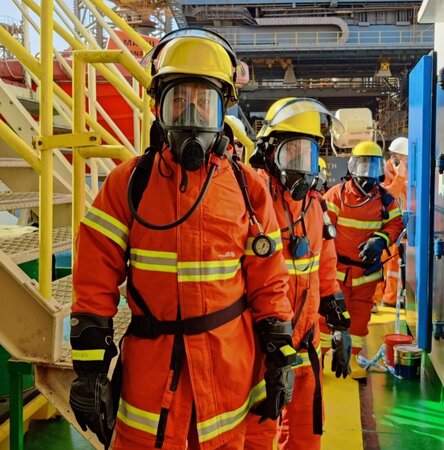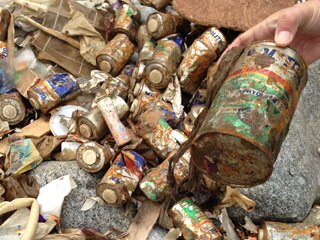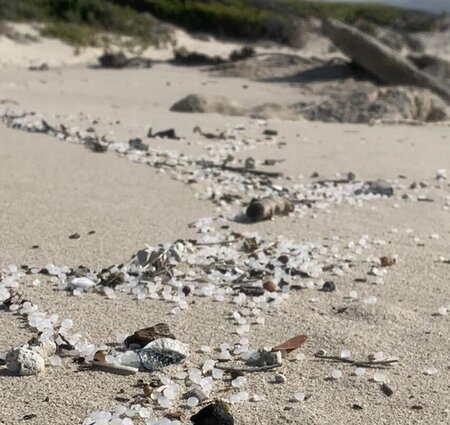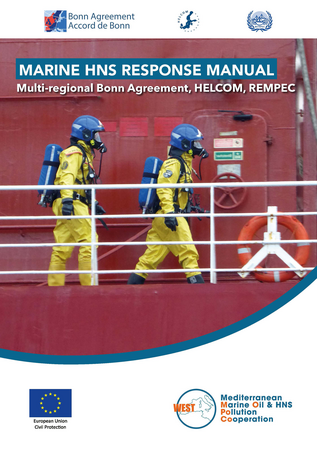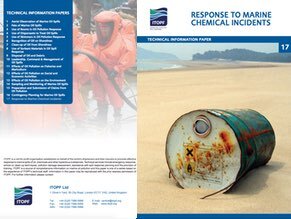Hazardous and Noxious Substances (HNS)
Chemical spills occur at a much lower frequency than spills of oil. However, the consequence of a chemical spill can be more wide reaching than that of oil and there is growing international awareness of the need for safe and effective contingency arrangements for chemical spills.
The wide variety of chemicals transported, their varying physical and chemical properties, the different ways in which they behave in the environment and the potential for effects on human health mean that response to chemical spills is not as straightforward as for oil.
What is HNS?
Not all chemicals transported by sea are considered hazardous. The 2000 OPRC-HNS Protocol, designed for preparedness and response, defines HNS as a substance other than oil which if introduced into the marine environment is likely to create hazards to human health, to harm living resources and marine life, to damage amenities or to interfere with other legitimate uses of the sea.
However, the 2010 HNS Convention, designed for compensation, describes HNS as a substance identified in one or more lists in the International Maritime Organization's Conventions and Codes.
Examples of IMO Conventions and Codes Providing HNS Lists
| Material | Conventions & Codes |
| Bulk liquids | Chapter 17 of International Code for the Construction and Equipment of Ships Carrying Dangerous Chemicals in Bulk (IBC Code) |
| Gases | Chapter 19 of International Code for the Construction and Equipment of Ships Carrying Liquefied Gases in Bulk (IGC Code) |
| Solids in bulk | Appendix 9 of Code of Safe Practice for Solid Bulk Cargoes (BC Code) if also covered by IMDG Code in packaged form |
| Packaged goods | International Maritime Dangerous Goods Code (IMDG Code) |
A general guide is that if the chemical concerned has i) a low biodegradation rate or high persistence, ii) a high bioaccumulation rate or iii) is classed as toxic / flammable / explosive / corrosive or reactive, it is likely to be considered as HNS (radioactive and infectious substances are outside the scope of the HNS regime).
According to IMO regulations, any packaged cargo transported at sea which poses a threat to people, other living organisms, property or the environment should be listed on the manifest as “Dangerous Goods” and should display the appropriate hazard labels, for example as per the UN Globally Harmonised System (GHS) or the International Maritime Dangerous Goods (IMDG) code. Any packaged cargo that represent a threat to the marine environment should also display an “Aquatic Hazard” label.

Explore Documents on Hazardous & Noxious Substances
Alternative fuels: a shift in the response paradigm?
The decarbonisation of shipping has become an increasingly prominent topic, and this is due to growing regulatory pressure, a changing climate of public opinion and investors demanding a faster energy transition as well as the industry’s increased focus on sustainability.
Are HNS spills more dangerous than oil spills? (2009)
While the hazards and consequences of oil spills are well known, little information exists for chemical spills. Words such as ‘carcinogenic’, ‘mutagenic’, and ‘neurotoxic’, which appear on shipping documents, are readily misinterpreted and extrapolated to worst-case scenarios causing public apprehension and mistrust. This paper attempts to answer the question ‘Are HNS Spills More Dangerous Than Oil Spills?
Balancing the plastic see-saw
Globally, plastics are a widespread consumer product and, due to inappropriate disposal and accidental losses, are now found ubiquitously in the marine environment. Recently, however, there has been a growing interest in plastic pellets, or nurdles, following a spate of losses from shipping vessels during transshipment. Over the last five years, ITOPF has been heavily involved in five spills of plastic pellets, including incidents in Sri Lanka, South Africa and Spain.
Marine HNS Response Manual
The Project to create the Marine HNS Response Manual was implemented through an inter-regional effort, including the participation of the Western Mediterranean Region Marine Oil and HNS Pollution Cooperation (West MOPoCo), the Regional Marine Pollution Emergency Response Centre for the Mediterranean Sea (REMPEC), the Bonn Agreement for the Greater North Sea and its approaches and the Helsinki Commission (HELCOM) for the Baltic Sea. The project benefits from the technical support and expertise of expert partner institutions such as Cedre, ISPRA and ITOPF.
TIP 17: Response to marine chemical incidents
This paper provides an introduction to the issues involved in responding to chemical spills and addresses the range of hazards present, the behaviour of chemicals when spilt at sea and briefly reviews available response options.
Categories: HNS, Technical Information Paper (TIPS)

